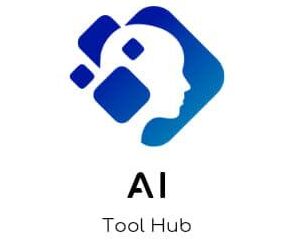Have you ever wondered if a person can see when you search for their name on LinkedIn? You’re not alone in this curiosity! LinkedIn is a professional networking powerhouse, and many find themselves navigating its complexities and privacy settings. In this article, we’ll unpack the intricate balance of visibility and privacy on LinkedIn, addressing your concerns about searching for others and what that means for your professional interactions.
This image is property of qph.cf2.quoracdn.net.
Understanding LinkedIn’s Privacy Settings
LinkedIn has developed a sophisticated privacy framework to allow users to manage their visibility on the platform. Understanding this system is crucial for navigating your connections and searches thoughtfully.
Your Profile Visibility
When you create a LinkedIn profile, you get to set the level of visibility others have regarding your profile. You can choose to make your profile completely public, meaning anyone, even those not on LinkedIn, can view your information. Alternatively, you might prefer to keep it more contained, limiting visibility to your connections only or to your network.
Searching for Profiles
Now, when you search for someone on LinkedIn, several factors come into play regarding whether they’ll know about your search. If your profile is set to public, others can see you’ve searched for them. LinkedIn may notify users in the “Who’s Viewed Your Profile” section if they fall into the category of ‘in the know’ regarding profile views.
Anonymous vs. Public Searches
LinkedIn offers an option for anonymous browsing. If you choose this setting, when you search for someone’s name or view their profile, they won’t be able to see your name or any identifying information. This can be useful if you want to research potential connections discreetly.
However, using this feature means you also lose the ability to see who has viewed your own profile. It’s a trade-off: anonymity for visibility. Think about what’s more important to you: remaining private or knowing who is interested in your profile?
How Does LinkedIn Notify Users?
LinkedIn functions on the principle of networking and engagement. Thus, it has mechanisms to let users know who’s interacting with their profiles to encourage connection and communication.
Notifications About Profile Views
When you visit someone’s profile, they might get a notification that someone has viewed it, but if you’re using an anonymous setting, they won’t know it’s you. The notification they receive will usually show that someone from “Your Network” or a specific industry viewed it, depending on your privacy settings.
‘Who Viewed Your Profile’ Section
This section on LinkedIn is crucial. It aggregates all the users who have viewed a profile. If you’re in private mode, the viewers who search for you will see a generic label like ‘LinkedIn Member.’ If you want people to see your professional persona, consider not using the anonymous browsing setting, as this keeps interactions transparent and open.
This image is property of qph.cf2.quoracdn.net.
The Ethical Considerations of Searching
Navigating the ethical aspects of searching for someone on LinkedIn can be subtle. You might find yourself wondering whether it’s appropriate to look for colleagues or competitors. Here are some considerations to keep in mind:
Respecting Privacy
While LinkedIn is a networking platform, it’s essential to respect others’ privacy preferences. If someone appears to shy away from connecting, searching their profile multiple times can come across as intrusive. Respect their boundaries by being mindful of how often you engage with their profile.
Intent of the Search
Think about why you are searching for someone. If it’s purely to gather information for networking or job opportunities, it’s generally acceptable. However, if your motives could be misconstrued—like stalking or personal curiosity—it’s best to hold back.
Utilizing LinkedIn Effectively
Understanding privacy settings and ethical considerations can help you utilize LinkedIn to its fullest potential while maintaining your professional integrity.
Building Genuine Connections
The essence of LinkedIn lies in its connections. When you demonstrate an interest in others’ professional lives, you can foster relationships that may open up new opportunities. When you search for connections and follow their updates, consider sending a connection request or a message to introduce yourself.
Leveraging Outreach Tools
Using LinkedIn efficiently may also involve leveraging tools that can help you automate and streamline your outreach. AI-powered tools can assist you in managing your outreach processes and help you send professional messages while keeping track of interactions.
Periodix: Your AI-Powered Assistant
One such tool worth considering is Periodix. It’s an AI autopilot designed to streamline your LinkedIn outreach, from initial messages to booking meetings. Here’s how it can enhance your LinkedIn experience:
| Feature | Description |
|---|---|
| AI Sequence Message Writer | Craft engaging messages tailored to your audience. |
| AI Response Qualification | Gauge interest from responses effectively. |
| Auto Follow-Up | Schedule and send follow-ups seamlessly. |
| Multiple Profiles Management | Manage conversations across different profiles from a single inbox. |
This tool not only saves you time but also helps you maintain connections across various outreach efforts. It can be a game-changer for anyone prioritizing professionalism and efficiency on LinkedIn.
This image is property of qph.cf2.quoracdn.net.
Making the Most of Your Search Results
Once you’ve searched for someone, the next step is to take action based on what you discovered. Here are some ways to capitalize on your search:
Evaluate Their Profile
After you’ve searched for someone, take the time to analyze their profile. Consider their recent posts, the articles they’ve shared, and their experience. This information can inform your approach when reaching out or connecting.
Engage Meaningfully
If you decide to connect with someone post-search, be sure to engage meaningfully. Reference something specific about their experience or their latest LinkedIn content. This shows you are not just making a generic connection request but genuinely interested in their professional background.
Follow-Up After Initial Contact
If you connect, don’t forget the importance of following up. Periodix can help automate this process, so you stay on top of your networking, making it easier to maintain those new professional relationships.
The Balance of Networking and Privacy
Networking on platforms like LinkedIn is about balance. You want to connect and build relationships, but you also want to respect others’ privacy.
Recognizing Your Own Privacy Needs
As you engage in searches, be mindful of your privacy as well. Consider who might be looking at your profile and what you want them to see. Adjust your settings based on how visible you want your information to be.
Utilize Settings Wisely
LinkedIn gives you tools to manage your visibility. If you’re in a hiring position, you might want to be more visible, while job seekers may prefer a different approach. Adjusting your settings to fit your professional needs helps you tailor your LinkedIn experience to your career goals.
This image is property of qph.cf2.quoracdn.net.
Conclusion: Navigating LinkedIn with Confidence
Searching for someone on LinkedIn doesn’t have to be a source of anxiety. Understanding LinkedIn’s privacy settings and how they work can lead to more confident interactions on the platform. Utilize the time-saving features of outreach tools like Periodix to maximize your efficiency.
You have the power to connect, engage, and build your professional network while maintaining the level of privacy that feels right for you. Whether you choose to search in anonymity or go public, what matters most is the intention behind your actions. Embrace LinkedIn’s features to enhance your professional journey while respecting both your privacy and that of others!




